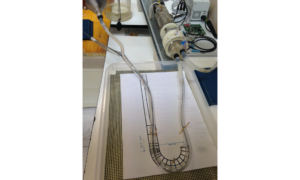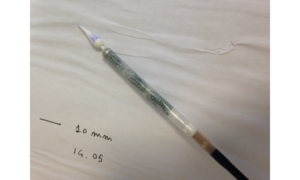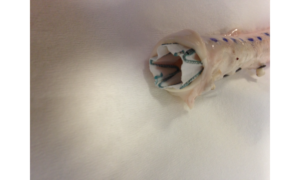The Beta-lab (Biomechanics for Endovascular Treatments of the Aorta) has developed a bench top model to study the changed biomechanics and hemodynamics of the aorta after thoracic endovascular repair. A Circuit of Extra corporal Circulation (CEC) was constructed to simulate a human physiological hemodynamic environment. This CEC can be controlled accurately to investigate the behavior and performance of the aorta under different circumstances. Silicone and porcine aortas are used to study hemodynamic changes and aortic behavior when challenged, e.g. with high blood pressure, angulation, before and after stent graft deployment, and with stent graft malposition. Modern imaging techniques will be explored to analyze biomechanics and hemodynamics.
Video 1: The stent graft was deployed in a soft silicon tube using our custom-adjusted delivery system. The pressure during deployment was 120/80mmHg and the pulse was 60/min, similar to that of a human.
Video 1: The stent graft was deployed in a soft silicon tube using our custom-adjusted delivery system. The pressure during deployment was 120/80mmHg and the pulse was 60/min, similar to that of a human.




